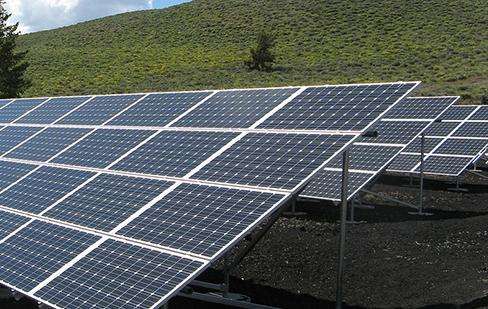Solar panels can charge new energy vehicles. Solar panels can produce an alternating voltage of 220 V via an inverter. In theory, with 220V power, electric vehicles can be charged, but the charging power is very low and the charger may not work. , or charging is slow and the charging time will be much longer. Without large surface area and high efficiency panels, it makes no sense to charge a car with solar energy.
Taking the world's most common polycrystalline silicon solar panels as an example, the conversion rate of this panel is only about 17%. In an environment with light intensity of 1000 W/m and temperature of 25 C, the output power of solar panels per square meter is about 170 W. The solar panel produces DC voltage and a solar inverter is required to convert current continu in 220V alternating current. After using an inverter, the problem of inverter power loss is usually involved. Typically, the inverter efficiency is around 90%. Then, 170W 0.9 = 153W, when the standard lighting ambient temperature is 25°C, the output power of one square meter of solar panel is about 150W. In other words, 1m battery panel can only be used by electrical appliances less than 150W.
If we use only one battery panel to charge the car, the following situation will occur: the overcurrent of the inverter enters the protection state and cannot charge the car effectively.
The charging power of the car is very high, even the power of the portable slow charging cable is about 3 kW. Plug a 3 kW load into a 150 W inverter, and when the inverter output current increases by N fois, the solar panel input current will double, approaching a short circuit. At this time, the solar panel voltage will drop rapidly when the voltage reaches the low voltage protection threshold of the inverter, the inverter will enter protection mode and stop working. In this case, it is very difficult to charge new energy vehicles.
If the low voltage protection problem is solved and the car can be charged, the charging time will be extended indefinitely.
I think many car enthusiasts want to install solar panels on their car. Using the sun to drive the car saves money and is environmentally friendly. . Since it uses electricity, why not use solar energy? Just like today's street lights, equipped with solar panels, you can achieve the goal of energy saving. Moreover,it can also reuse resources, which is environmentally friendly and practical. This idea is good, but with current technology this approach is not feasible.
New energy vehicles are now the trend of future automobile development. Solar power is one of the most environmentally friendly sources of energy and many automakers are eager to try it. Among them, Toyota and Panasonic have sold more than 1,300 Prius hybrids equipped with solar panels in Japan (parameter |), and Tesla also announced that it will launch a solar car.
Our national comparison Yadi's dual-mode hybrid F3DM (parameter |) is equipped with solar panels. On July 26, 2016, the solar-powered aircraft "Solar Impulse 2" completed humanity's first solar-powered round-the-world flight. For such a subject, it is not impossible to use solar panels on theroof of new energy vehicles. Theoretically, their installation is feasible, because the impact on the environment is less than that. traditional cars. Its outlook is largely optimistic, but current technology is not yet mature. Currently, for solar cell installation, how to achieve the energy conversion rate of solar cells. It is no longer a question of converting it into electricity, but of storing it after conversion.At present, the energy conversion rate of solar panels is still relatively low, only about 20%, and the upper surface of a car does not is only 1 to 1.5 square meters. , the electricity production capacity is therefore relatively low. Low-cost solar panels are still relatively heavy and the electricity they generate cannot match the increased power consumption. In addition, the intensity of the pansolar panels are relatively low, so they cannot replace the cost of an original car roof; the panels are also relatively weak, you may not be able to get your money back even if the car is sold out.
The principle of solar panel power generation is that solar energy shines on the solar panel, and the solar panel generates heat and generates low electrical energy. This electrical energy is stored in the battery and supplied to the user.
Solar panels produce very little electricity. For example, take solar roadside lights. The area of the light panel on the solar lamp is about one third of the area of the car roof. Such a light panel starts working from dawn until sunset. down. I work an average of ten hours a day, powering LED lights (ahem, knock on the board, please note thisare LED lights) for fourteen hours at night and I continue charging the next day. Isn't that great?














